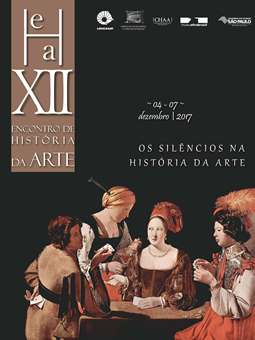Resumo
Constituir um corpus iconográfico é a tarefa de qualquer pesquisador que almeja perceber as nuances de um tema, ou ciclo imagético específico. Selecionar um grupo de imagens está intrinsicamente associado a compreender como um tema foi representado em uma determinada localidade e época.
Referências
AREFORD, David S. The Viewer and the Printed Image in Late Medieval Europe. Farnham: Ashgate Publishing, 2010.
BASCHET, Jérôme; DITTMAR, Pierre-Olivier. (Orgs.) Les Images dans l?Occident M di val. Turnhout: Brepols.
BALE. Anthony. The Jew in the medieval book: English antisemitisms, 1350-1500 Cambridge: Cambridge University Press, 2006.
CHEMELLI, Aldo. Trento nelle sue prime testimonianze a stampa. Trento: Collegio di Trento, 1975.
DONATI, Lamberto. L'inizio dela satmpa a Trento ed il Beato Simone Trento: Zincografia Artigiana, 1968
HSIA, Ronnie Po-chia. Trent 1475: stories of a ritual murder trial. New Haven: Yale university press, 1992.
LIPTON, Sara. Dark Mirror: The Medieval Origins of Anti-Jewish Iconography. New York: Metropolitan Books, 2014.
PARSHALL Peter, SCHOCH Rainer. (Orgs.) Origins of European Printmaking: Fifteenth-Century and Their Public. New Haven: Yale University Press, 2005.
PARSHALL Peter, SCHOCH Rainer. (Org,) The Woodcut in the Fifteenth-Century Europe New Haven: Yale University Press, 2009.
TREUE, Wolfgang. Der trienter Judenprozess: Voraussetzungen – Abläufe – Auswirkungen (1475 – 1588). Hannover: Hahnsche Buchlandlung, 1996.
YUVAL, Israel Jacob. Two nations in your womb: perceptions of Jews and Christians in late antiquity and the middle Ages. London; Berkeley; Los Angeles: University of California Press, 2006.
YUVAL, Israel Jacob. Vengeance and Damnation, Blood and Defamation: From Jewish Martyrdom to Blood Libel Accusations. Tel Aviv: Zion 58 1993. p. 33-90.

Este trabalho está licenciado sob uma licença Creative Commons Attribution 4.0 International License.
Copyright (c) 2017 Vinícius de Freitas Morais

